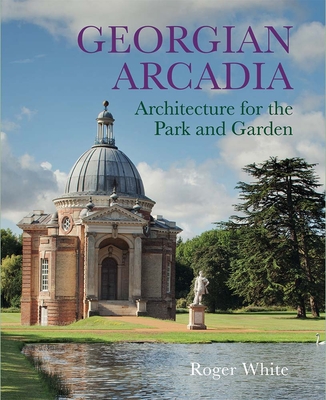Georgian Arcadia: Architecture for the Park and Garden (Hardcover)
$65.00
On Our Shelves Now
Description
An exploration of the origins and evolution of Georgian landscape architecture, a period of innovative and diverse garden structures in which some of the era’s greatest architects experimented with form, style, and technology
The invention and evolution of the Georgian landscape garden liberated garden buildings from the corset of formality, allowing them to structure much more extensive areas of garden and park. One of the leading authorities on Georgian landscape architecture, Roger White explores a genre in which some of the era’s greatest architects experimented with different forms, styles, and new technology. Covering not just the obvious adornments of parks and gardens such as temples, summerhouses, grottoes, towers, and “follies,” the book also explores structures with predominantly practical functions, including mausolea, boathouses, dovecotes, stables, kennels, deer pens, barns, and cowsheds, all of which could be dressed up to make an architectural impact. White examines these structures not only architecturally but from a functional and cultural viewpoint, considering questions of stylistic origins and development. Focussing on the contributions of Britain’s leading eighteenth-century architects—Vanbrugh, Hawksmoor, Gibbs, Kent, Adam, Chambers, Wyatt, and Soane—Georgian Arcadia provides a richly illustrated account of a period of innovative and diverse garden building.
About the Author
Roger White is an architectural historian specialising in the Georgian period. He is a Fellow of the Society of Antiquaries of London and has been Secretary of both the Georgian Group and the Garden History Society.
Praise For…
“This book thus represents the life’s work of a doyen, and it shows. White convinces utterly in his thesis.”—Iona McLaren, The Telegraph

